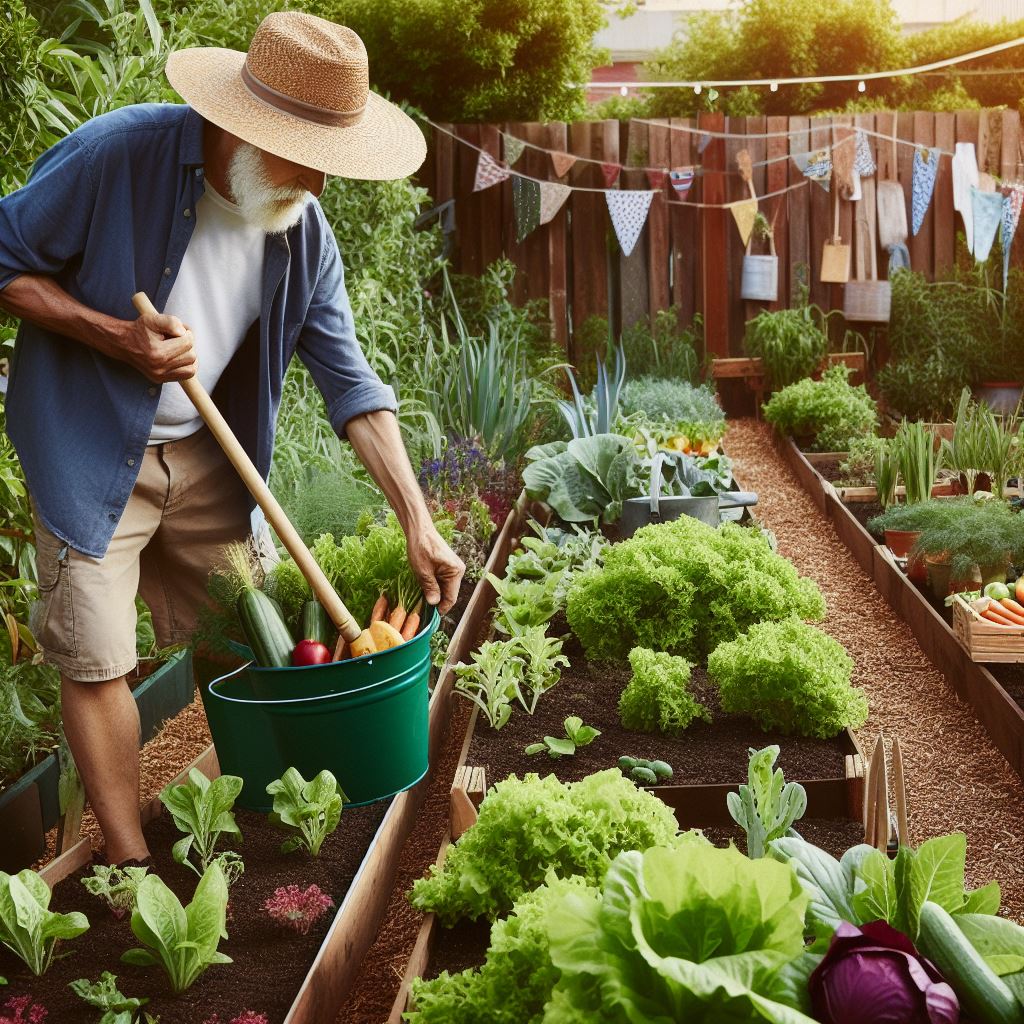Introduction
Importance of eating local
In today’s world, where sustainability and supporting local businesses are gaining more importance, eating local food has become a popular trend.
Not only does it benefit the local economy, but it also has a positive impact on the environment by reducing carbon footprint.
However, many people believe that eating local is expensive and not feasible on a budget. This is a common misconception that needs to be addressed.
Common misconception about the high cost of eating local
Contrary to popular belief, eating local food can be affordable for individuals on a tight budget.
By directly purchasing from local farmers and producers, consumers can eliminate the middleman and lower the overall cost.
Shopping at farmers markets or joining community-supported agriculture (CSA) programs can provide access to fresh, locally sourced produce at reasonable prices.
Another way to eat local on a budget is to plan meals around seasonal produce.
Seasonal fruits and vegetables are often abundant, which leads to lower prices.
Furthermore, buying in bulk and preserving excess produce through canning or freezing can extend the shelf life and help save money in the long run.
Additionally, DIY initiatives like growing your own herbs or vegetables can significantly reduce costs and promote self-sufficiency.
Utilizing community gardens or participating in food cooperatives can also provide access to fresh, local food at reduced prices.
Basically, the importance of eating local food should not be overshadowed by the misconception of high costs.
By exploring various options like buying directly from local producers, shopping seasonally, and engaging in DIY initiatives, individuals can eat local on a budget and contribute to a more sustainable food system.
So, let’s support our local farmers, stimulate the local economy, and enjoy the benefits of fresh, nutritious food, all while being mindful of our budget.
Read: Slow Food Movement: What’s the Hype?
Transform Your Agribusiness
Unlock your farm's potential with expert advice tailored to your needs. Get actionable steps that drive real results.
Get StartedWhy eat local?
Fresher and more flavorful produce
- Locally produced food is often harvested at its peak ripeness, ensuring maximum flavor.
- Local produce is typically sold shortly after harvest, meaning it is fresher and more nutritious.
- The shorter transport distance also means less time for produce to lose its flavor and nutrients.
- Eating local allows you to indulge in seasonal fruits and vegetables, enhancing your culinary experience.
Supporting local farmers and the community
- When you buy local food, you directly support local farmers and their families.
- Local farmers rely on community support to sustain their livelihoods and continue producing food.
- By supporting local farmers, you contribute to the growth and economic development of your community.
- The money you spend on local food stays within the community, circulates locally, and benefits everyone.
Reducing environmental impact
- Buying local reduces the carbon footprint by minimizing transportation needs.
- Food imported from distant places requires extensive fuel consumption and contributes to greenhouse gas emissions.
- Local food systems often prioritize sustainable farming practices, minimizing the use of harmful chemicals.
- Supporting local agriculture helps preserve farmland, ecosystems, and biodiversity in your region.
Read: Preserving the Harvest: Canning 101
Find Out More: Organic Farming Meetups Across the USA
Tips for eating local on a budget
Shop at farmers’ markets
Benefits of farmers’ markets
- Access to fresh, seasonal produce
- Support local farmers and artisans
- Enhanced nutritional value
- Lower carbon footprint
How to find local farmers’ markets
- Check online directories and apps
- Ask friends, neighbors, and co-workers
- Visit local community centers and town halls for information
Bargaining tips
- Buy in larger quantities to negotiate better prices
- Ask if sellers offer discounts for bulk purchases or frequent customers
- Be polite, friendly, and respectful when bargaining
Join a community-supported agriculture (CSA) program
Definition of CSA
CSA programs provide direct access to locally grown produce by purchasing a share of the harvest
Cost-effective benefits of joining a CSA
- Receive a variety of fresh, organic produce at a lower cost than retail
- Support local farmers and sustainable agricultural practices
- Build a stronger connection to your food and the farming community
Getting the most out of a CSA membership
- Plan meals according to the weekly produce received
- Explore new recipes and culinary techniques to use all produce
- Attend CSA events and engage with the farmers to learn more about the food
Buy in bulk and preserve
Advantages of purchasing in bulk
- Cost savings due to lower unit prices
- Reduction in packaging waste and environmental impact
- Stocking up on staples and non-perishable items for the long term
Strategies for preserving fruits and vegetables
- Canning, freezing, and dehydrating fruits and vegetables
- Making homemade sauces, jams, and pickles
- Properly storing produce to extend its shelf life
Recipes utilizing preserved produce
- Fruit compotes and jams for spreading on toast or adding to desserts
- Vegetable soups and stews using frozen or canned vegetables
- Homemade salsas and relishes to accompany meals
Grow your own food
Basics of starting a garden
- Choose a suitable location with adequate sunlight
- Prepare the soil by removing weeds and adding compost
- Select appropriate seeds or seedlings based on your climate and preferences
Cost-saving advantages of growing your own food
- Eliminate grocery expenses for certain fruits, vegetables, and herbs
- Control the use of pesticides and chemicals by growing organically
- Enjoy the satisfaction of growing and harvesting your own produce
Recommended plants for beginners
- Leafy greens like lettuce and spinach
- Herbs such as basil, mint, and rosemary
- Tomatoes, zucchini, and peppers for a variety of flavors
Read: Farm-Friendly Kids’ Meals Made Easy

Creative ways to cook local produce
Now that you know how to find and buy affordable local produce, it’s time to get creative in the kitchen.
Cooking with local ingredients not only supports your community but also leads to delicious and nutritious meals.
Here are some creative ways to cook local produce:
Experiment with new recipes
One of the best ways to cook local produce is by incorporating it into your favorite dishes.
Get creative with how you use local ingredients in recipes you already love.
For example, you can add fresh local tomatoes to your pasta sauce or top your pizza with locally grown vegetables.
By doing so, you enhance the flavors of your favorite dishes while supporting local farmers.
Additionally, try exploring traditional recipes that make use of local produce.
Every region has its own unique dishes that have been passed down through generations.
Look for traditional recipes that include local fruits, vegetables, and even meats.
This allows you to discover new flavors and appreciate the cultural heritage of your community.
Try international cuisine
Another way to cook local produce is by trying out international cuisine.
Different countries have their own culinary traditions that heavily rely on local ingredients.
Explore dishes from various cultures that feature locally available produce.
For example, if you have access to fresh seafood, why not try making a traditional seafood paella or a Thai-inspired fish curry?
Cooking international cuisine with local ingredients adds a global touch to your meals while celebrating the flavors of your region.
Just like with traditional recipes, cultural recipes are a great way to use local produce.
Research the culinary traditions of different cultures that are known for their use of local ingredients.
From Italian pasta dishes made with locally grown wheat to Korean kimchi made with homegrown cabbage, cultural recipes allow you to experience diverse flavors while supporting local farmers.
Share recipes and meal ideas
Lastly, don’t forget to share your recipes and meal ideas with others.
Showcase Your Farming Business
Publish your professional farming services profile on our blog for a one-time fee of $200 and reach a dedicated audience of farmers and agribusiness owners.
Publish Your ProfileEngage with the local community and exchange cooking tips, recipe variations, and meal recommendations.
This can be done through local farmers’ markets, cooking classes, or community events dedicated to food and sustainability.
By sharing your knowledge and experiences, you contribute to a sense of community and inspire others to cook with local produce.
Additionally, take advantage of online platforms dedicated to recipe sharing.
Join online communities or forums where people share their favorite recipes, meal prep ideas, and cooking techniques.
These platforms provide a wealth of information and allow you to connect with like-minded individuals who are passionate about cooking with local ingredients.
Online recipe sharing expands your culinary horizons and opens up a world of delicious possibilities.
In a nutshell, cooking with local produce on a budget doesn’t have to be boring or monotonous.
Embrace the versatility of local ingredients by experimenting with new recipes, trying international cuisine, and sharing your culinary adventures with others.
Not only will you enjoy flavorful meals, but you’ll also support your local community and promote sustainability in the food industry.
Read: Root to Stem: Waste-Free Cooking
Conclusion
Eating locally sourced food provides multiple benefits, from supporting small farms in your community to reducing your carbon footprint.
However, buying directly from producers can be more expensive than shopping at large supermarkets.
This need not prevent you from reaping the rewards of eating local.
With some planning and clever tricks, you can eat fresh, seasonal produce while sticking to your grocery budget.
Throughout this blog, we explored ways to access affordable local food, like joining a CSA or food co-op, shopping at farmers markets during peak season, preserving bumper crops, and even growing your own herbs and vegetables.
Meal planning and cooking at home rather than dining out also helps free up money to splurge on high-quality ingredients.
Embrace these useful tips and discover the joy of regional cuisine while supporting family farms.
The multitude of reasons to eat local, from elevated flavor to environmental impact, make the effort worthwhile.
With creativity and commitment, anyone can discover just how tasty and cost-effective eating close to home can be.
Join the local food movement today for a happier, healthier you and community.




